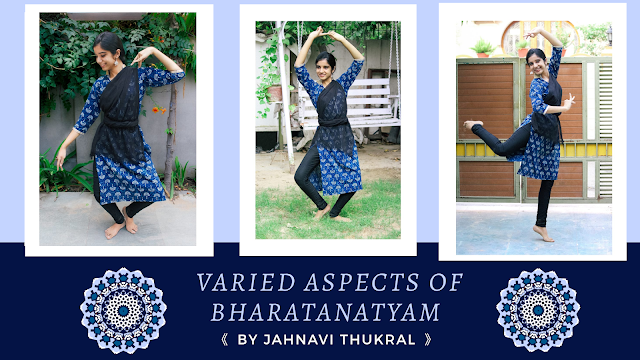Varied Aspects of Bharatanatyam #Aagaaz #Day27
Bharatanatyam is a dance form originated in Tamil Nadu. It is the oldest dance forms of India. Earlier it was performed in temples but now it has spread all across the world.
The basic posture required for this dance is a half sitting posture with bent legs and knees facing sidewards in opposite directions, this posture is called as Aramandi.
Dance can be broadly classified under three main heads such as Nritta, Nritya and Natya.
Nritta:
Nritta means pure dance, a presentation of rhythm through graceful movement of the body.
Nritya:
Nritya consists of footwork and abhinaya. It relates to Rasa and psychological state.
Natya:
Natya means abhinaya and it is the combined manifestation of bhava, rasa and abhinaya.
Abhinaya is a distinguishing characteristic of Bharatnatyam; it goes beyond conveying an aesthetic experience, beyond narration, beyond showing a story unfolding, and expresses the inner experience of the dancer, or the character portrayed by the dancer.
Similarly, mudras equally have a major role in dance. With the help of mudras that is the hand gestures , the dancer is able to showcase everything and also narrate a story.
Ghungroos serve to accentuate the rhythmic aspects of the dance and allow complex footwork to be heard by the audience.





Comments
Post a Comment